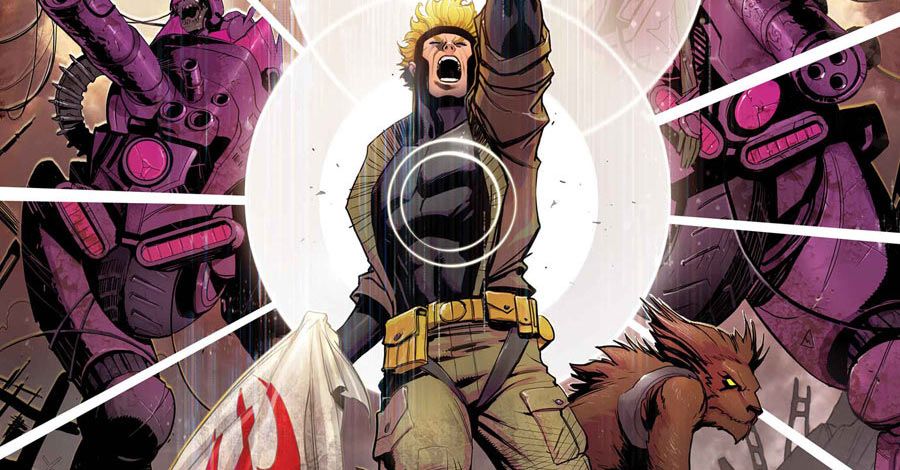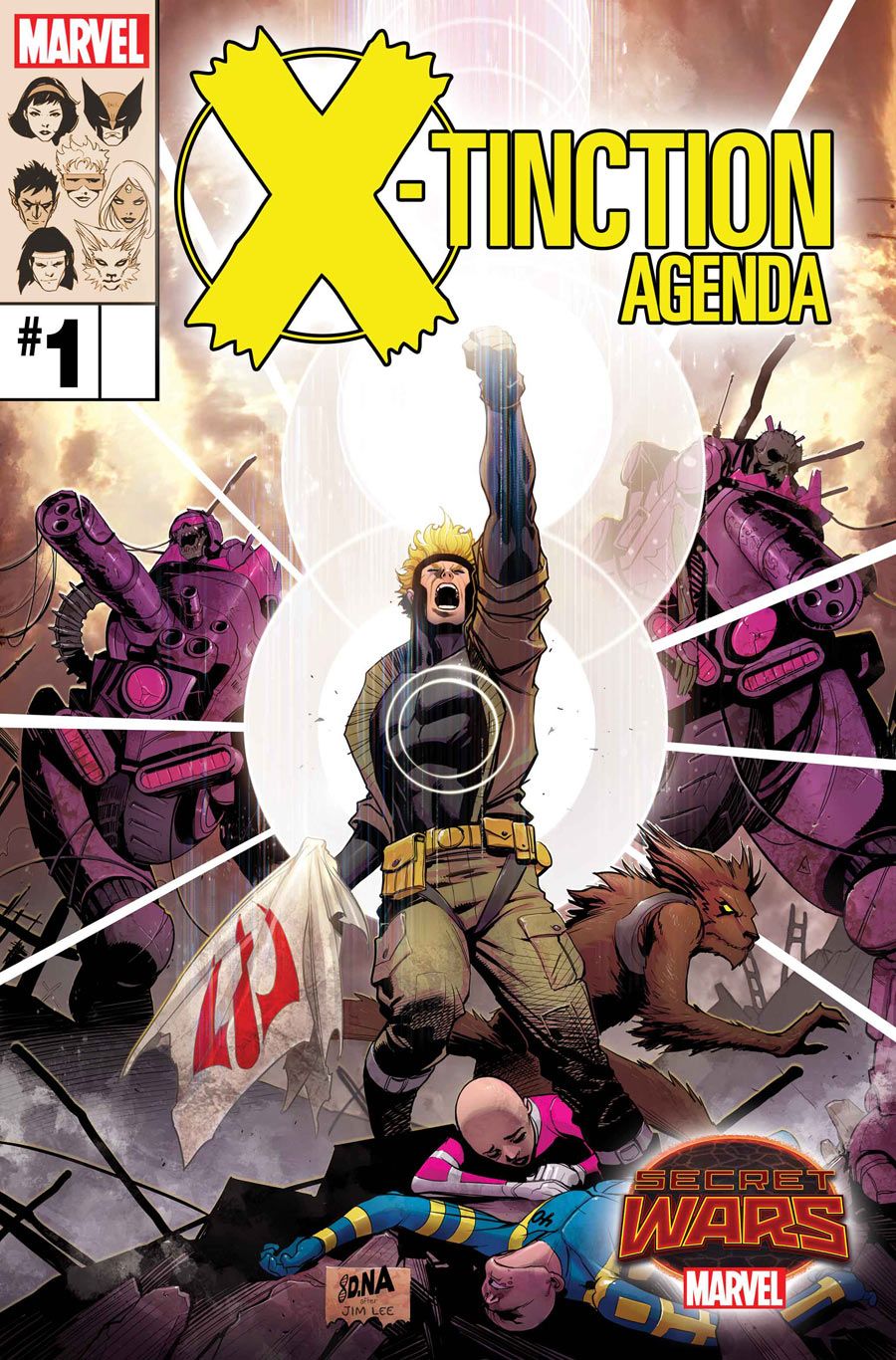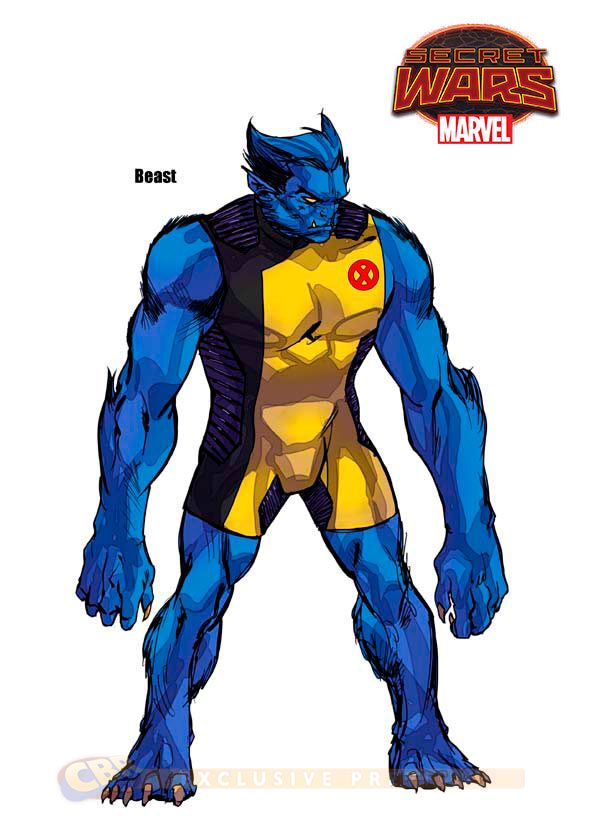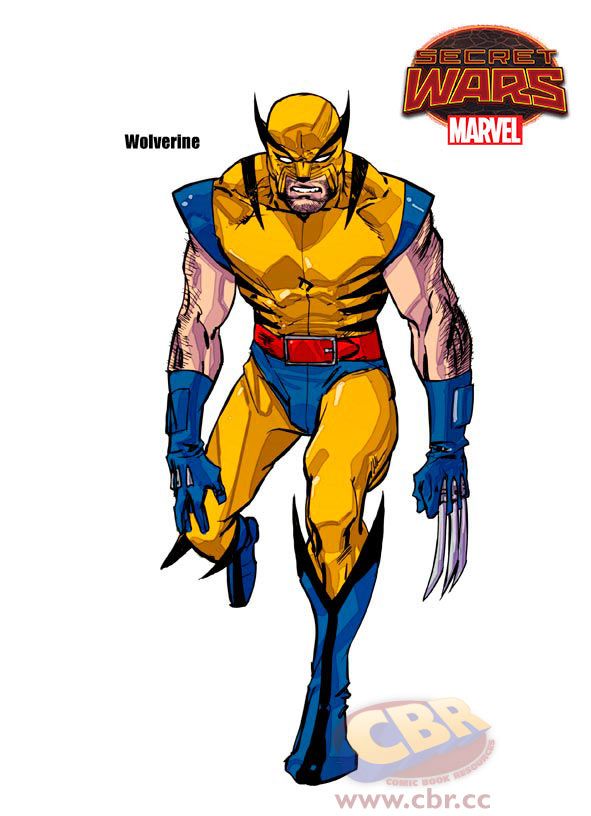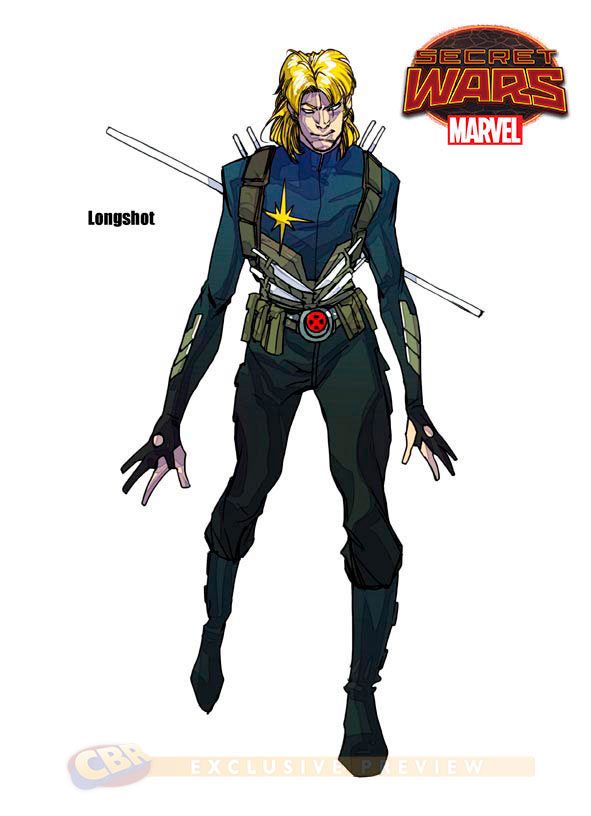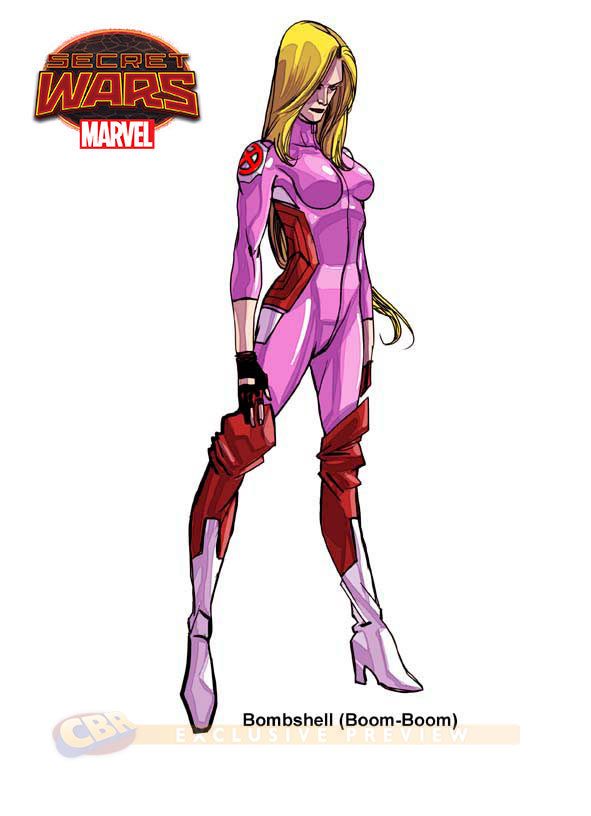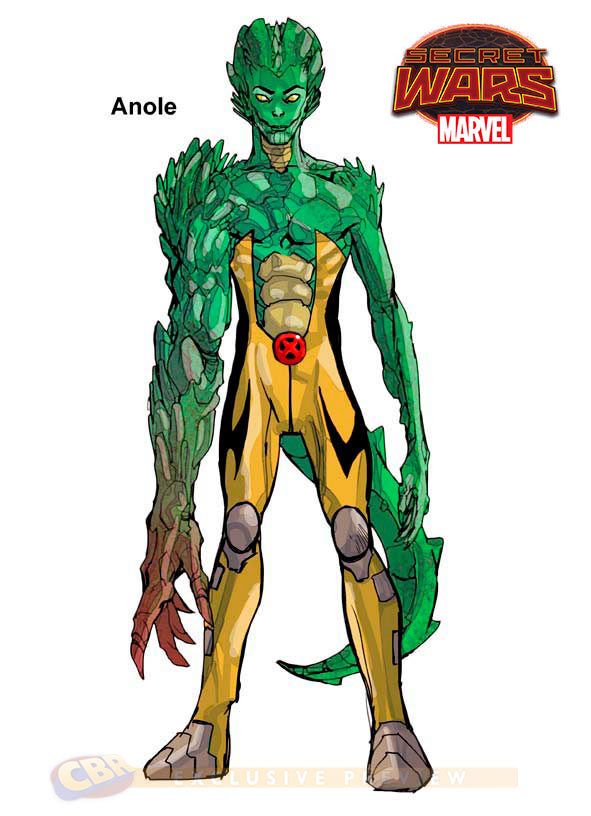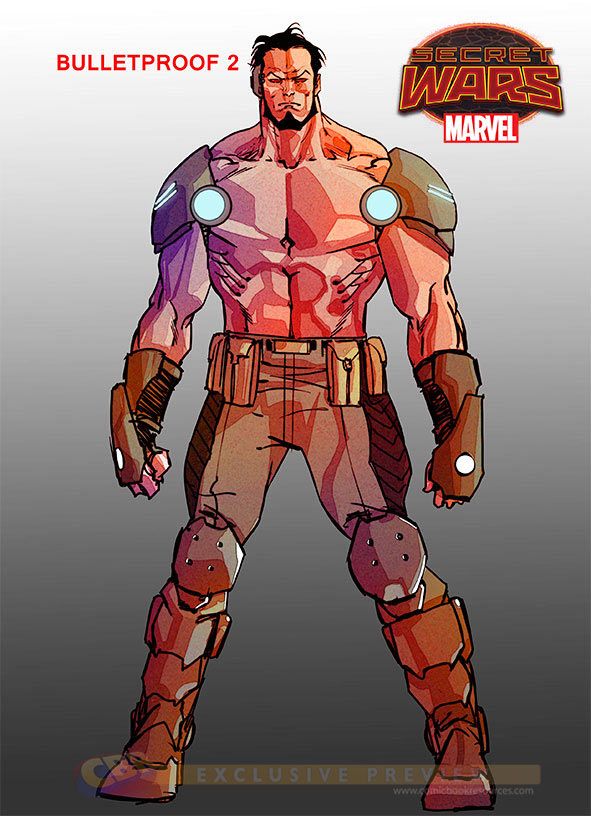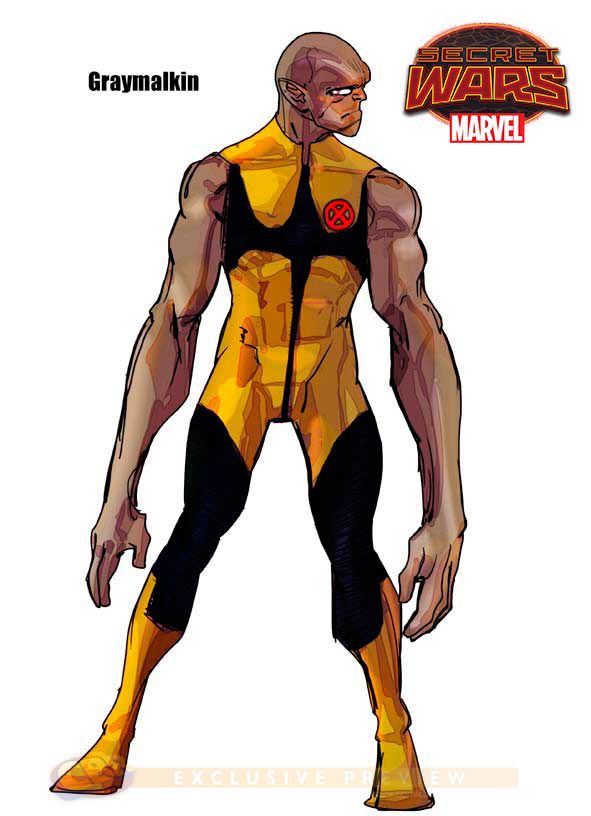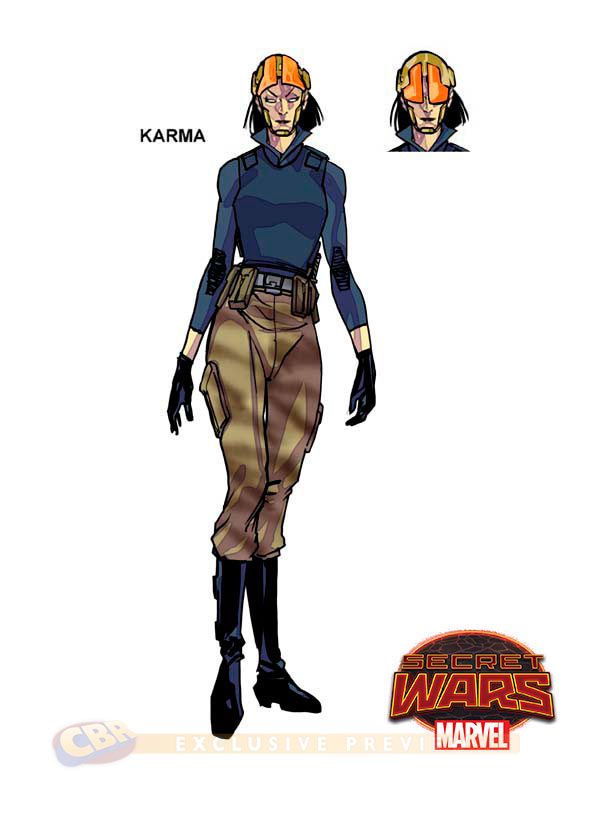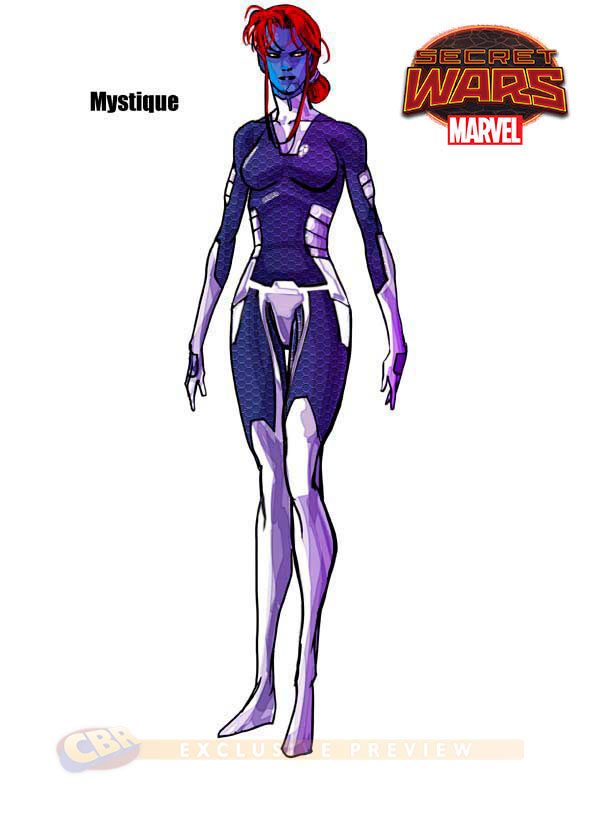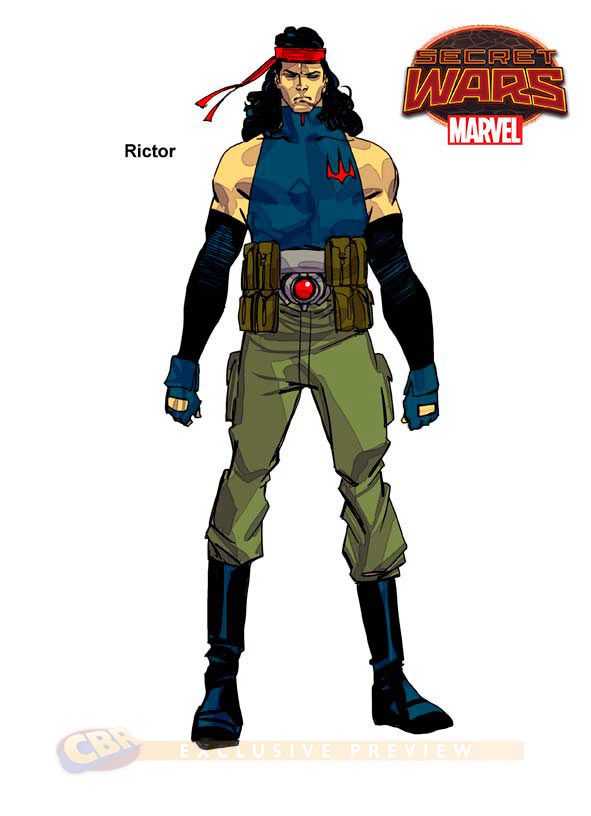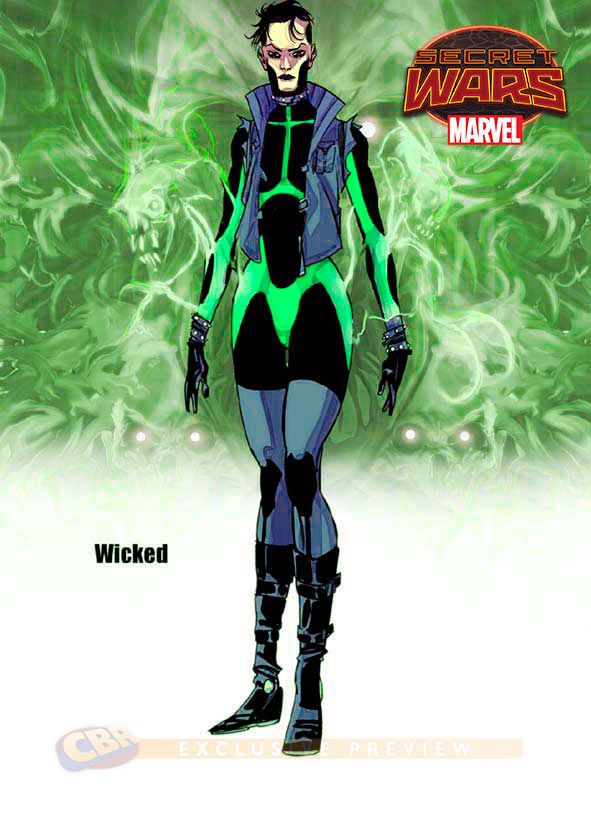One of the most tragic places in the Marvel Universe, the island nation of Genosha was once a paradise, built on the back of its mutant population who were treated as slaves. When the X-Men fought to liberate Genosha's mutants in the "X-Tinction Agenda" crossover, the country became a mutant homeland with what appeared to be a bright future. Years later, though, a tragedy would befall the country as a horde of Sentinel robots invaded and exterminated its population of 16 million mutants. Subsequent calamities befell the nation, including M-Day, which robbed most of the Earth's mutants of their powers and crushed efforts to rebuild Genosha, and the most recent tragedy, when the Red Skull used the nation as his home base in an attempt to exterminate Earth's mutants.
RELATED: Guggenheim & Pacheco's "Squadron Sinister" Terrorizes "Secret Wars"
This June, "Arrow" Executive Producer Marc Guggenheim and artist Carmine Di Giandomenico will take readers back to a time when Genosha was still a dangerous place, but wasn't yet haunted by so many ghosts. In "X-Tinction Agenda," a "Secret Wars" series, the creative team re-imagine the fallout of the titular event, establishing Genosha as one of the domains on the patchwork planetoid known Battleworld.
CBR News: Most "Secret Wars" series use their source tales as the basis of their stories, but they're all heading off in different directions from there. What's the basic set-up of your story? Does it pick up in the immediate aftermath of the original crossover?
Marc Guggenheim: This is a very interesting exercise in the sense that I'm doing a sequel to "X-Tinction Agenda," and it starts off basically with the end of the original story -- and then jumps ahead a number of years. The consequential X-Men universe has changed, so the X-Men 10 years after the original "X-Tinction Agenda" are not the same X-Men that we know and love today.
For example, in "All-New X-Men," Hank McCoy brought the original lineup of X-Men forward in time, but in this reality, the Beast brought the team from "Giant Size X-Men" #1 forward to the present day. In this reality, Logan is dead much the same way in the Marvel 616 universe, but there is a Logan running around with the X-Men who is the much less refined and much less samurai-like Logan of "Giant Size X-Men" #1. So that's a fun little thing to see.
Your central character is Havok, who is as capable of leading super teams as his brother, Cyclops. When we first meet him in this story, though, he's spent several years rebuilding and leading the nation of Genosha. How has that impacted him?
I think leading a super team is a heck of a lot easier than leading an entire country, especially an entire country that is dealing with the kinds of things that Genosha is dealing with. When we pick up in Genosha, it's really gone to hell in a hand basket. It's no longer the green and pleasant land established in the original "Uncanny X-Men" run.
This is a country that's literally tearing itself apart at the seams. The reason is that they are literally facing extinction in the form of this virus appropriately called The Extinction Plague. The Extinction Plague is wiping out all the mutants and mutates on Genosha. Wolfsbane and Havok who stayed behind, per the original "X-Tinction Agenda," to rebuild the country are having to contend with this problem and Man! It's not easy.
Is the Extinction Plague similar to the mutant Legacy Virus?
It's my nod to the Legacy Virus. I'm a fan of that storyline, and when I first started talking about this project with Marvel we were talking about the Legacy Virus and sort of other iterations. It's a nod, but I was also breaking this story during the Ebola outbreak of a few months ago, so it was something that was very much on my mind and in the zeitgeist, as it were. It's a little Ebola. It's a little Legacy Virus. It's a little bit of everything.
Is Havok the reader's PoV character, or do you follow the perspective of other characters as well?
It's Havok and Wolfsbane. They were the two people who stayed behind at the end of the original "X-Tinction Agenda." We'll actually discover that they've developed a romantic relationship. They've spent the past 10 years shoulder-to-shoulder, dealing with all the ups and downs of their newfound responsibilities. So in that sense, it's a bit of a two-hander; Wolfsbane and Havok.
What's it like writing Wolfsbane in her role as co-leader? I don't believe Rahne Sinclair had really been in a leadership role at that time, and almost shied away from that responsibility when she was in groups like the New Mutants.
It's fun to write Rahne, because like a lot of the old [Chris] Claremont characters, I feel like I've got that voice very clearly in my head. At the same time, I wanted to show that Rahne has really gone through some serious changes over the past several years -- particularly since she's been placed in this leadership role and she's had the burden of all these responsibilities.

What I've been going for with Rahne is a mix between what I would characterize as her very characteristic idealism with a sort of real world practicality that she's had to adopt. She's had to get tough because, quite frankly, she's been dealing with some really heavy shit. It's not been an easy road for her, and I wanted to reflect that in her characterization. At the same time, I wanted it to still be Rahne. It's been a delicate balance, but that's been the fun. You get to see how things are working with her, and how things are different.
It sounds like Havok and Wolfsbane are trying to save a civilization on the verge of an apocalyptic breakdown. What does an Extinction Plague-ravaged Genosha look like?
The Genosha that we all know and love from the original "X-Tinction Agenda," is very futuristic and idealized. The whole idea was it was this utopia, built on the backs of mutants and mutates. This Genosha has the same sort of infrastructure, but I told artist Carmine Di Giandomenico to imagine it as if the country has been going to hell in a hand basket.
The architecture still looks cool and futuristic, but it's fallen into disrepair. The population is there, but there are food riots and a massive economic recession. Because one of the things that was established in the original "X-Tinction Agenda," and even in the original Genosha trilogy, is the fact that Genoshan economy really is based upon the abilities of mutates. So when all the mutates start dying off, it's really going to start to affect the entire country. It's not just the mutants and mutates that are effected by the virus; it's all the humans living in Genosha as well, because the basis of their whole way of life is dying off.
Does "X-Tinction Agenda" unfold solely in Genosha? Or are there other parts to the Battleworld domain you're playing with?
We are going to meet this reality's version of the X-Men, and they obviously have to have a place to live, so we will be visiting their headquarters.
One of the fun things about this iteration of "X-Tinction Agenda" is, I really tried to go for a sequel kind of feel. A sequel is a good mix of the familiar and the brand new. There are sort of iconic moments that you want to re imagine for the purposes of the sequel, and one of those iconic moments is Genosha attacking the X-Men where they live, abducting various members, and taking them back to Genosha. Then, the X-Men can go and try to save them.

That's sort of the shape of the original "X-Tinction Agenda," and it's the shape of of my version of the story. What twists it is the fact that that this time, the Genoshans are lead by Havok and Wolfsbane, who actually have a really good reason for doing this. There should be a segment of the readership that's rooting for Havok, Wolfsbane and the Genoshans.
It sounds like "X-Tinction Agenda" has its superhero elements, but it's almost more like an outbreak/contagion style thriller.
Yeah, it's a little bit of both. There's a bit of contagion. There's a bit of all out war. To me, the essence of "X-Tinction Agenda" is the X-Men going to war with Genosha to get their people back. I think at most, though, it's a fun, rollicking superhero story, because it's got all these really great superheroes. It's also a travelogue, as so many of these different "Secret Wars" books are, of these different versions of realities and different ways things could have unfolded within the Marvel Universe.
For your "Secret Wars" contributions, you were offered the chance to revisit any past X-event -- and you chose "X-Tinction Agenda." What made you pick this event?
The thing about "X-Tinction Agenda" is that it was the very first X-Men crossover. It's easy to forget that, because there have been so many since then, but this was the first one. I was interning at Marvel when it was being produced. I was working in the publicity department.

"X-Tinction Agenda" really resonates with me because it reminds me of this really great time in my life and I really loved the original story. When Marvel asked me to try and re imagine it, I totally jumped at the chance because it was just too much fun not to do.
Carmine Di Giandomenico has drawn pretty much every major Marvel character and is capable of telling almost any kind of story. So what can you tell us about Carmine's designs for the characters and world of "X-Tinction Agenda?"
First of all, I love his designs. His sense of design is really, really terrific, and quite frankly, it's a mission critical thing to have an artist like Carmine on this book because so much of it needs to be designed from the ground up. We're dealing with familiar characters, but they're familiar characters in very different situations, so we really have to reexamine the visual look of things.
Genosha needs to look different than when it was originally established. It also has to look different than it looked in the original "X-Tinction Agenda." Similarly, where the X-Men live is a whole new visual look. It's a real challenge, and Carmine is totally up for it because his design sense is fantastic.
One of the things I love about his art is to me it evokes the '90s, in the best way. It doesn't evoke what I would say has become the cliche version of the '90s, but it does have a timeless quality that works very nicely for this event that is so rooted in the '90s. There's no escaping that, but you want to honor just the right parts.
Right -- no belt pouches and characters without feet.
[Laughs] Exactly. It's tricky, but what's great about Carmine is he fully understands how to strike that balance, which I think is key.

